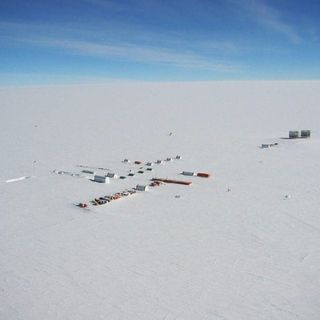The world’s largest radio telescope, known as FAST and located in the southwest province of Guizhou in China, is opening to non-Chinese scientists in April this year for a wide range of projects, including the search for alien civilizations.
“This year we will allocate about 10% of the total observational time slots to requests from overseas,” said Jiang Peng, the telescope’s chief engineer, to Xinhua news agency.
FAST, which is short for the Five-hundred-meter Aperture Spherical Telescope, is the only giant telescope in the world after the Arecibo telescope in Puerto Rico collapsed a month ago as a result of hurricanes and the failure to maintain the telescope properly. The Chinese telescope cost a whopping 1.1 billion yuan (US$175 million) to build. It covers an area as large as 30 football pitches, which also displaced thousands of villagers in the process. It is so large it could hold enough water to fill a bottle for every human being four times over. This enormity of the telescope determines that it can intercept signals that other radio telescopes will likely miss, such as even radio waves generated by extraterrestrial life.
Related on The Swaddle:
Earth‑Like, Potentially Habitable Planet Discovered 102 Light Years Away
The telescope operates at a considerable cost, although no precise figures are available. Its operating body, the National Astronomical Observatories of China, confirmed yesterday that scientists from foreign countries could use it if they wished, though domestic researchers would be given the vast majority — 90% — of time slots. For international scientists wishing to use the huge telescope for the remaining 10 percent of the time, online bookings will open in April. It is currently unclear if the body will be charging for foreigners’ use of the telescope.
According to scientists, China has already quietly pointed FAST at some exoplanets near our solar system that may be able to support life. In one experiment conducted in 2019, the telescope concentrated on GJ273b, a planet about three times the size of Earth and 12 light-years away. The observation, which lasted only about five minutes, led the scientists to make an important discovery: if an alien civilization on that planet built a 70-gigawatt antenna and sent signals to the Earth, it could be easily detected by FAST, and vice versa.
This data and more collected by the telescope should allow for a better understanding of the origins of the universe — and aid in the search for alien life. Chinese scientists also plan to use FAST to keep their search on for more distant alien life forms. The telescope will check for stars and galaxies of interest while listening out for signals from thousands of exoplanets, said Li and colleagues.
However, there does arise a problem if the radio telescope detects signals from deep outer space. With the collapse of Arecibo Observatory, it might be hard for other, less-powerful telescopes to detect and thus verify the discovery. This kind of confirmation is critical, as in the past, some ‘alien’ signals that have been detected have turned out to be the result of hardware glitches or electromagnetic disturbances on Earth.




